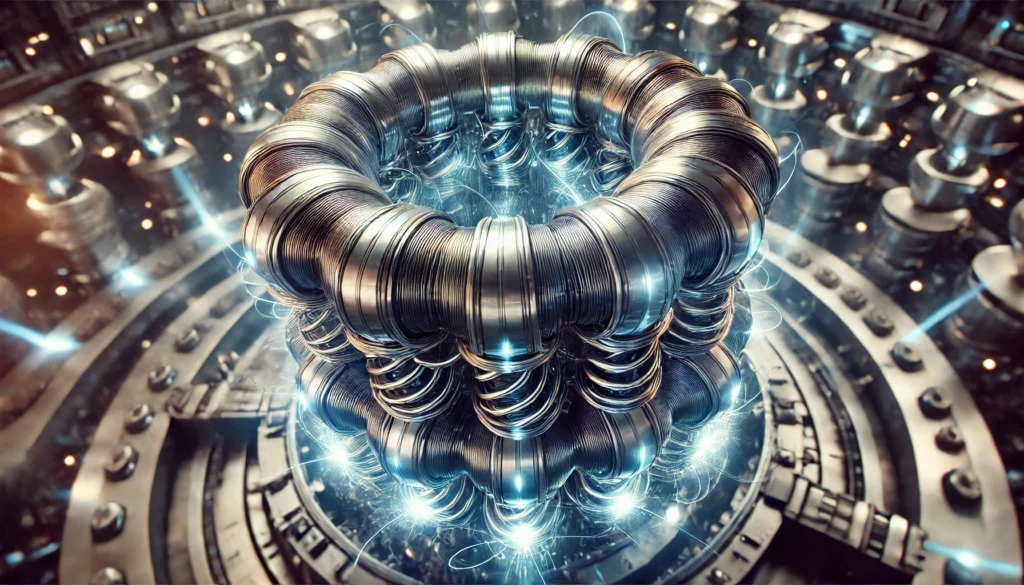Fun Fact: The energy produced by just one gram of fusion fuel is equivalent to burning eight tons of coal!
Clean energy is the need of the hour, and Pacific Fusion is leading the charge in revolutionizing sustainable power. The startup, spearheaded by geneticist Eric Lander, is working towards making fusion energy commercially viable. Fusion energy, often dubbed the “holy grail” of power generation, has the potential to provide limitless, clean, and safe energy without the harmful emissions associated with fossil fuels. In this blog, we will explore how Pacific Fusion is striving to turn this vision into reality, the challenges involved, and what the future holds for fusion energy.
What is Fusion Energy?
Fusion energy is derived from the same process that powers the sun and other stars. Unlike nuclear fission, which splits atoms to release energy, fusion combines lighter elements, such as hydrogen isotopes (deuterium and tritium), to form helium, releasing massive amounts of energy in the process. This reaction is incredibly efficient, producing far more energy than fossil fuels and traditional nuclear reactors while generating minimal radioactive waste.
The Potential of Fusion Energy
The key benefits of fusion energy include:
- Limitless Fuel Supply: Hydrogen isotopes are abundant in seawater, ensuring a nearly unlimited fuel source.
- Zero Carbon Emissions: Fusion does not produce greenhouse gases, making it environmentally friendly.
- Minimal Waste: Unlike nuclear fission, which generates long-lived radioactive waste, fusion produces negligible harmful byproducts.
- High Energy Output: A small amount of fusion fuel can generate a tremendous amount of energy, reducing dependence on coal, gas, and oil.
Pacific Fusion’s Revolutionary Approach
Pacific Fusion, a Silicon Valley-based startup, is developing a novel method called pulsed magnetic fusion. Unlike conventional approaches such as tokamak reactors (used in projects like ITER – International Thermonuclear Experimental Reactor), Pacific Fusion aims to use strong magnetic fields to confine and compress plasma efficiently, making the process more scalable and cost-effective.
Key Strategies and Innovations
- Advanced Plasma Confinement: Using high-powered magnetic fields to sustain plasma at the required temperatures.
- Machine Learning Integration: Leveraging AI-driven algorithms to optimize and control the reaction process.
- Material Science Advancements: Developing heat-resistant materials capable of withstanding the extreme temperatures of fusion reactions.
The Challenges of Achieving Fusion Energy
Despite its potential, commercial fusion energy faces significant obstacles:
- Extreme Temperatures: Plasma must be heated to over 100 million degrees Celsius to enable fusion reactions.
- Sustaining the Reaction: Containing and maintaining plasma stability for extended periods is a major engineering challenge.
- Funding and Regulation: Large-scale fusion projects require substantial investment and regulatory approvals before commercialization.
Case Study: The Global Fusion Race
Pacific Fusion is not alone in this pursuit. Other key players include:
- Commonwealth Fusion Systems (CFS): A spin-off from the Massachusetts Institute of Technology (MIT), CFS is working on compact fusion reactors using high-temperature superconductors.
- Helion Energy: A U.S.-based startup aiming to achieve net energy gain with its novel reactor designs.
- ITER (International Thermonuclear Experimental Reactor): A multi-national collaboration in France focused on proving the feasibility of large-scale fusion power.
Along with Pacific Fusion, these companies are expanding the limits of fusion energy development.
The Future of Fusion Energy
Experts predict that the first commercial fusion plant could be operational by the 2030s. If Pacific Fusion and its competitors succeed, the world could see a massive shift away from fossil fuels, mitigating climate change and providing a reliable power source for future generations.
Conclusion
Fusion energy represents the next frontier in clean power generation, with Pacific Fusion at the forefront of this transformation. While challenges remain, rapid advancements in science and technology are bringing fusion power closer to reality. The world is eagerly watching as this revolutionary energy source moves from theory to practice.
Author’s Note
As a writer passionate about clean energy solutions, I believe that fusion power is one of the most promising paths to a sustainable future. The efforts of companies like Pacific Fusion, combined with global collaborations, could change the way humanity generates and consumes energy forever.
G.C., Ecosociosphere contributor.
References and Further Reading
- Pacific Fusion Official Website
- Innovative Tech Movements: Paving the Way for a Smarter and Greener Tomorrow. https://thebusinessunlimited.com/innovative-tech-movements/
- https://www.wired.com/story/plaintext-pacific-fusion-eric-lander/






Comments
“Amazing post, keep up the good work!”
I do agree with all the ideas you have introduced on your post They are very convincing and will definitely work Still the posts are very short for newbies May just you please prolong them a little from subsequent time Thank you for the post
I like what you guys are up too. Such intelligent work and reporting! Keep up the excellent works guys I?¦ve incorporated you guys to my blogroll. I think it will improve the value of my website 🙂